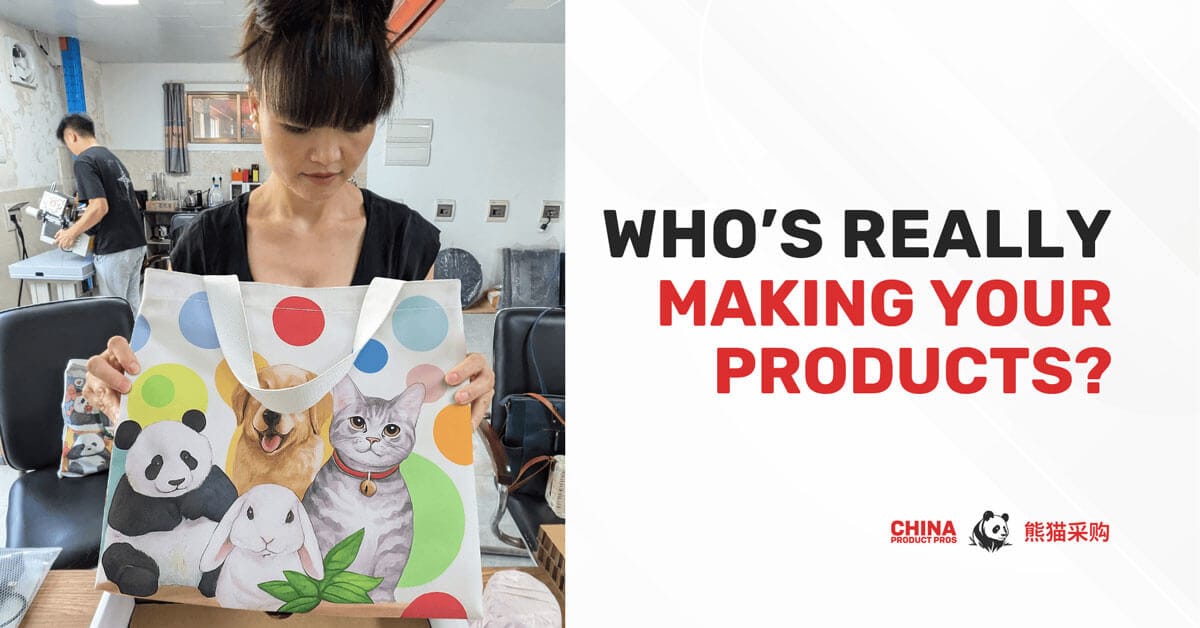I’ll never forget a conversation I had with a brand owner at a conference.
For three years, he thought he had a great relationship with his “factory” in China. The quality was decent, communication was okay, and the business was growing.
Then he went to the Canton Fair.
By pure chance, he stumbled upon a booth displaying products that looked identical to his. He started talking to the staff and mentioned his brand. Their response was chilling:
“Oh, we know your brand. We’re the ones who actually make your product.“
He discovered his trusted “partner” was a trading company — a middleman — that had been marking up his product by 100 %. He was paying $2.40 for a unit that cost $1.20 to produce.
This isn’t a rare story. In our work, we find many established e-commerce brands (even those with 7 + years of experience) are unknowingly using trading companies.
While traders can have a purpose for very small or diverse orders, sticking with one as you scale is one of the single biggest brakes on your profitability and product quality.
Table of Contents
Why Going Factory-Direct is a Non-Negotiable for Scaling Brands
Your 5-Minute Audit: How to Unmask a Trading Company
- The Google Maps Test
- The ImportYeti Investigation
- The Business License Check
- The Surprise Video Call
Why Going Factory-Direct Is Non-Negotiable for Scaling Brands
The Obvious: Cost
Traders add a markup. We’ve seen it range from a “modest” 15 % to an eye-watering 100 % +.
A 24 % saving on COGS, like one of our clients achieved by ditching their trader, can translate to a massive boost in net profit.
The Hidden Danger: Communication Breakdown
When you develop a custom product, you need to speak directly to the engineers and technicians on the factory floor.
With a trader in the middle, your critical feedback gets filtered, translated, and often lost. It’s a game of telephone where the prize for losing is a container full of defective products.
The Quality Gamble
A trader’s primary loyalty is to their own profit margin, not your brand’s consistency.
To protect that margin, they might “shop” your purchase order around to different factories.
This is why you see perfect quality on your first order, only to have the specs, materials, or colours mysteriously change on the second. The trader switched factories to save a few cents, and they will never tell you.
Your 5-Minute Audit: How to Unmask a Trading Company
You don’t have to fly to China to figure this out. Here are four simple checks you can run from your desk this afternoon.
The Google Maps Test
Ask for their exact factory address and plug it into Google Maps (or Baidu Maps for better results in China).
Do you see a sprawling industrial park or a sleek office building in a downtown commercial district, surrounded by restaurants and karaoke bars?
Factories need space. Offices don’t.
The ImportYeti Investigation
Use a free tool like ImportYeti to look up your supplier’s name. Analyze their shipping history.
A true factory is a specialist. They’ll have a tight, logical assortment of products (for example, different types of stainless steel water bottles).
A trader’s manifest looks like a random aisle at a department store: Bluetooth speakers, paper notebooks, and yarn. No factory on earth produces all three.
The Business License Check
Ask for their business license (营业执照, yíngyè zhízhào). A legitimate partner will provide it.
On the license, look for the “Business Scope” section. You want to see the characters for “manufacturing” (生产, shēngchǎn).
If you only see characters for “sales” (销售, xiāoshòu), you’ve found a trader.
The Surprise Video Call
During a WeChat conversation, ask for a spontaneous tour. Say, “This is great! Can you walk me over and show me the production line right now?”
An actual factory manager can and often will be proud to show you around. A trader, sitting in an office miles away, will make excuses.
Moving from a trader to a direct factory relationship is a rite of passage for every serious product business.
It’s the moment you stop letting someone else control your costs and quality, and start building a truly resilient, profitable supply chain.
Like these tips? Subscribe to our newsletter for more insights on sourcing, manufacturing, and scaling your product business.


0 Comments